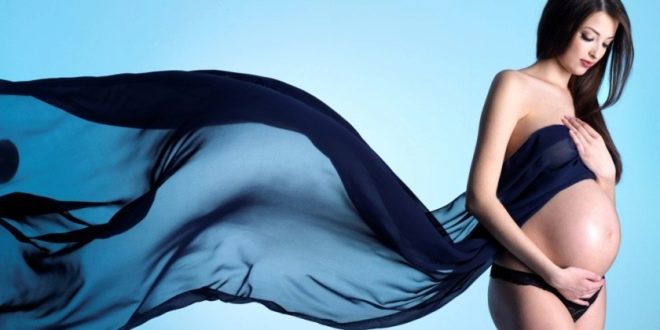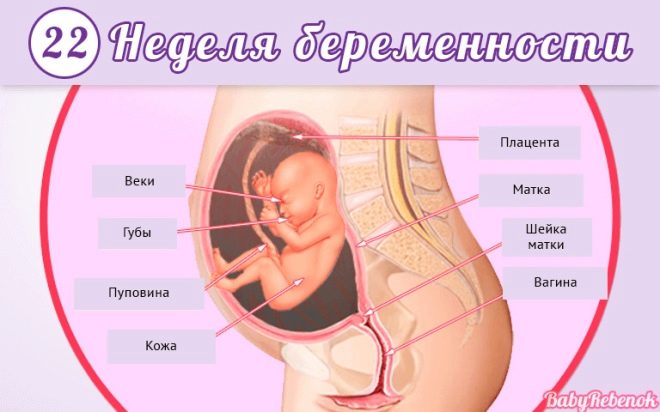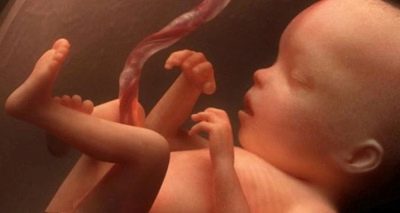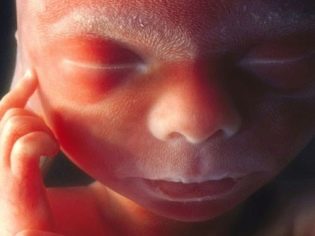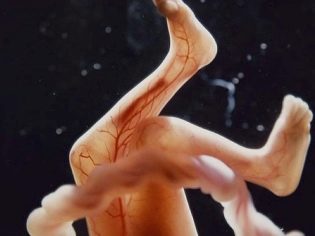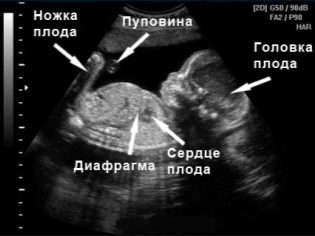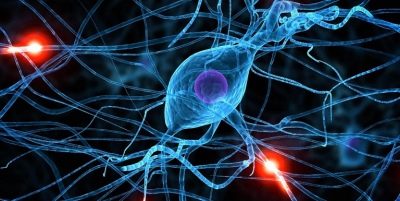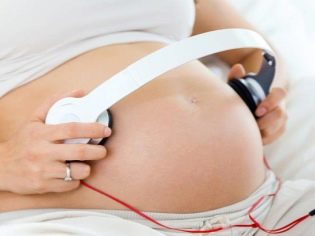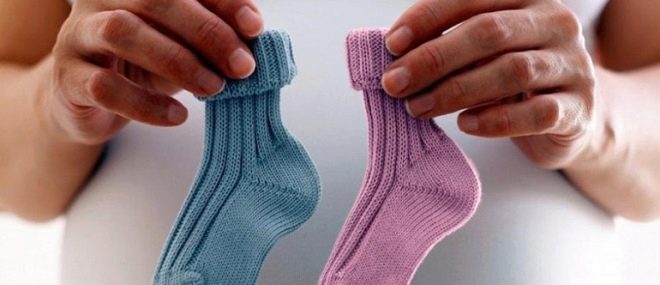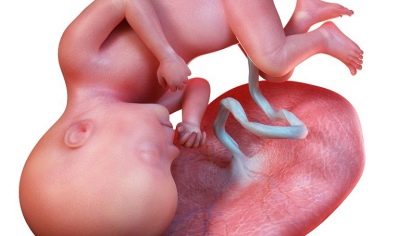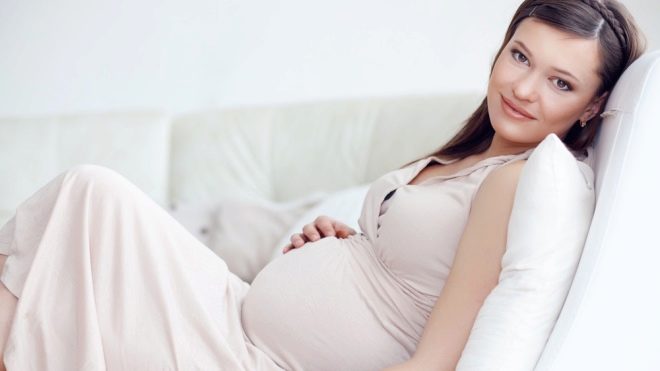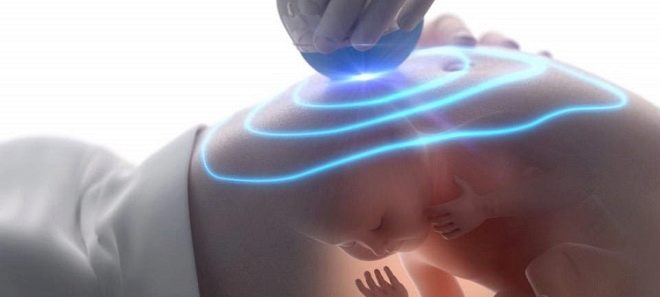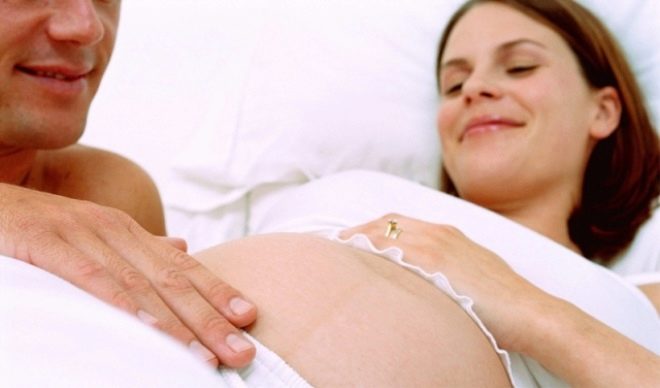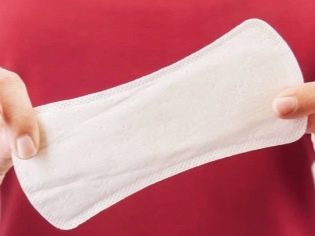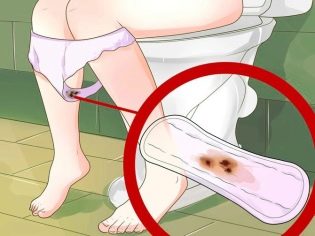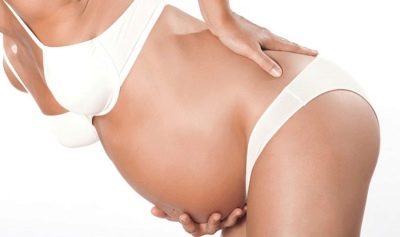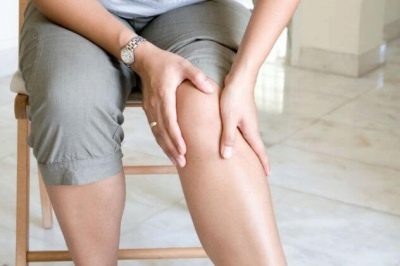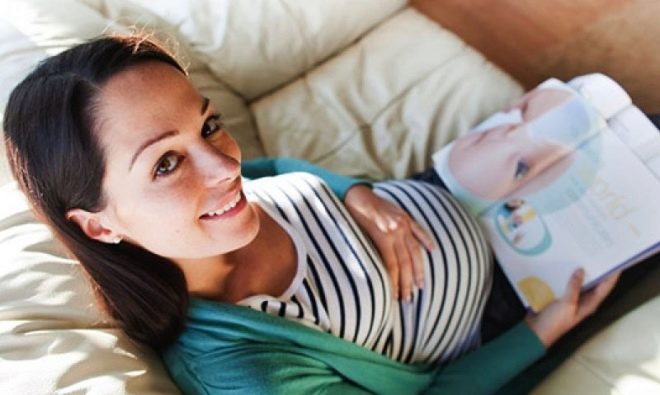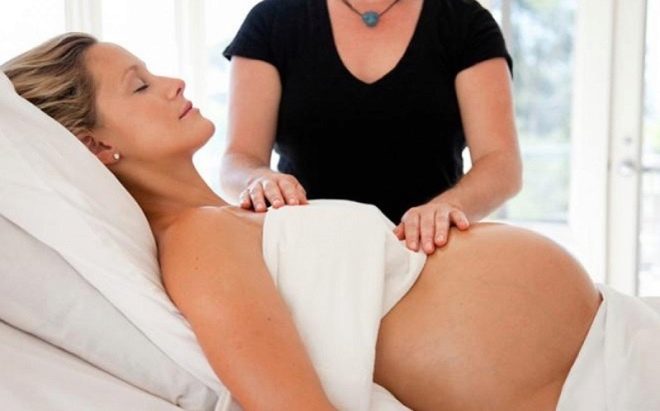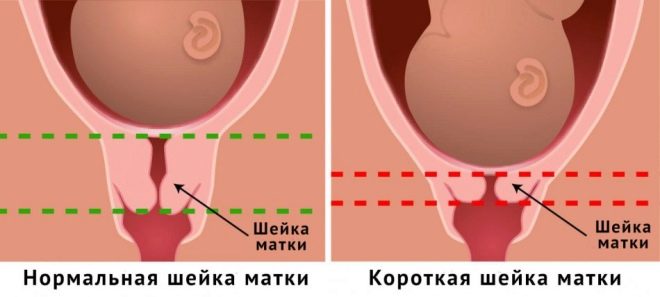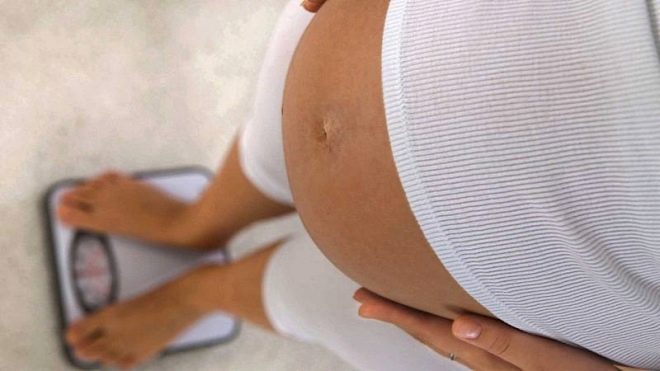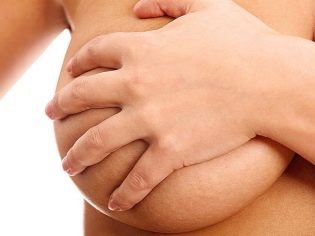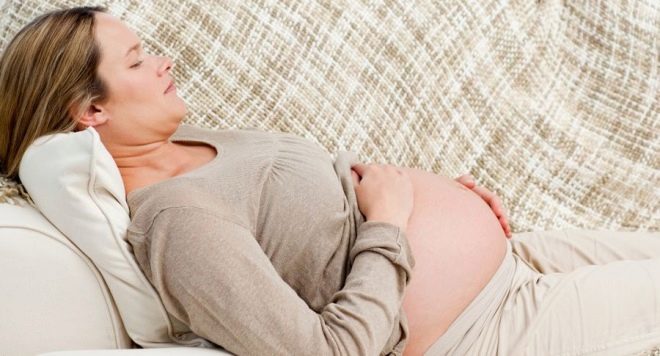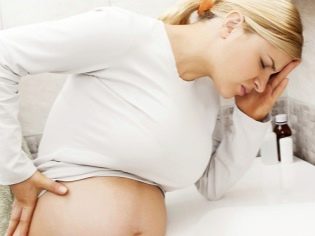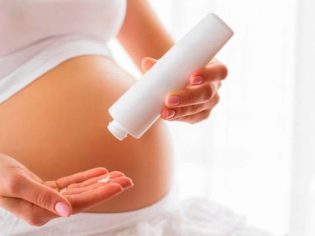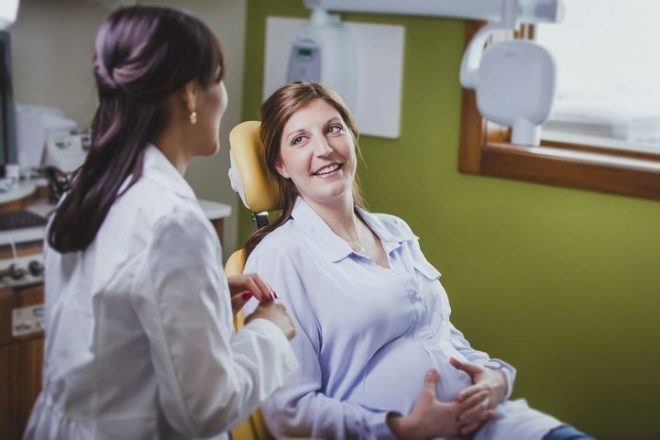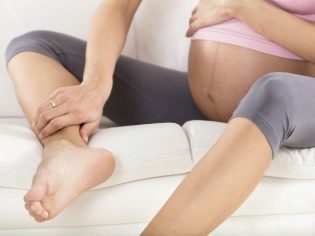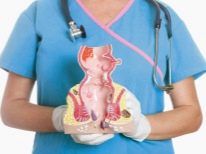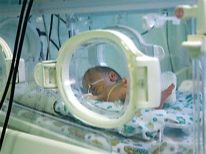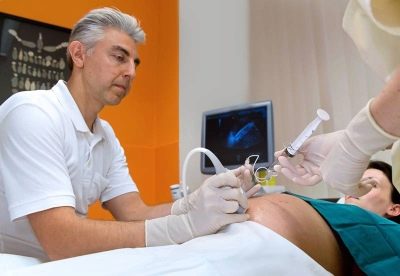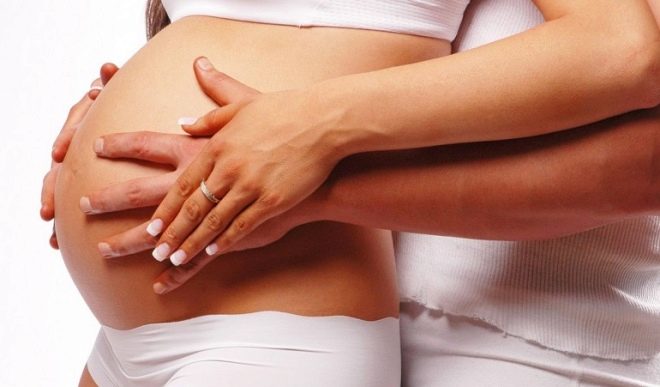22 week of pregnancy: what happens to the fetus and the expectant mother?
At 22 weeks of gestation, a woman is full of energy, but the growing belly is already beginning to noticeably limit her physical abilities. She can still see her legs herself, lace up her shoes, but no longer has that mobility as before: walking causes shortness of breath, the need to sit for a long time or stand in the workplace causes fatigue and discomfort. Many are beginning to dream of going on maternity leave.
How many months is it
22 week of pregnancy corresponds to 20 weeks from conception. The sixth obstetric month is in progress, exactly five calendar months have passed.
During the nursing of babies, women and doctors count the time in weeks by obstetric. The first such week corresponds to the period from the beginning of the last menstrual period until their end, conception falls on the third week. Thus, obstetric weeks are ahead of the true term by approximately two weeks.
The beginning of week 22 is a full week 21 and a few days. Talking about what happens to the baby and his mom at week 22, we mean six days between 21 and 22 weeks. 18 weeks have passed already from the delay of the month; the woman has long been accustomed to the idea that she will soon become a mother. The current term is a little more than half of the pregnancy.
Fetal development
This week, the baby passes the next important "frontier". Now, if something unexpected happens, the appearance of the crumbs will not be considered a miscarriage, it will be a premature birth.
The weight of the crumbs in week 22 reaches 500 grams, and this fact gives doctors the opportunity to save his life if birth occurs this week. Of course, it is very difficult to predict, but neonatologists with a modern level of medicine can do a lot to ensure that such a tiny child gets a chance of survival.
The growth of the baby this week reaches 30 centimeters.. From crown to sacrum (KTR) - 22-23 centimeters. Now the growth will not increase as quickly as before, because the baby has an important task - to gain weight, that is what he will do with special diligence almost to the birth.
Baby weight is growing daily. If at the beginning of week 22, they average 420 grams, then at week 21 it is already almost 500 grams.
What does the fetus look like?
The crumb is more and more like a newborn. He is no longer so skinny and shriveled. The subcutaneous fatty tissue is being formed in full swing. At week 22, it begins to be distributed throughout the body. Most of all it is on the soles and palms of the baby, least of all - on the forehead and on the nose.
Boys on the scrotum have no subcutaneous fat, children of both sexes have no fatty tissue on their eyelids. The most intensive increase in the number of fat cells will be observed in the last two months of gestation.
Apart from the fact that the appearance of fat has a beneficial effect on the appearance of the fetus (it ceases to be thin, the folds and wrinkles on the skin gradually smooth out, the skin ceases to be red), this subcutaneous layer is also important for thermoregulation, and more precisely for keeping warm. Now freezing does not threaten the baby, but after the birth of the skin, it is the subcutaneous fat that will help the crumbs to adapt to the new habitat.
Another distinctive feature of the appearance of the baby at week 22 is the original lubricant. It covers with a thick layer all his body, including his face. Lubrication is necessary in order that gentle and for the present thin skin was more protected.The lubricant reliably holds on the skin a layer of lanugo - original vellus hair, which is a manifestation of the work of hair follicles. The baby has completely completed the formation of the face, fingers, have nails and their own unique fingerprints.
The proportions of the body gradually come to conformity: the head now has the correct shape, it is not as big in relation to other parts of the body as it used to be. Legs and handles grow, and the lower limbs grow faster, earlier they noticeably lagged behind the upper ones.
Internal organs
At the current time new bodies are not laid. Everything is already formed and even functioning. At week 22, the formation of the spine is completed, its discs are already “workable”. The heart copes well with its responsibilities - it supplies blood to all parts of the body, pumping up to 25 liters of blood per day.
The heart grows in size, the heartbeat is easy to listen without ultrasound, only with a stethoscope. The average heart rate this week is between 150 and 175 beats per minute.
The ripening of the lungs continues. The intestine makes a reduction, the kidneys successfully cope with the task of producing urine. The “debugging” of the glands' work continues: in the current term, sweat and sebaceous glands are actively developing.
The liver produces special enzymes that are necessary for the breakdown of indirect bilirubin, which is formed during the breakdown of hemoglobin. This rather toxic substance with the help of the liver turns into neutral straight bilirubin, which is eliminated from the child’s body through the placenta.
Nervous system
The brain begins to slow down in growth, now more complex, "jewelry" processes take place in it - the furrows and gyrus of the cerebral hemispheres form. This week the brain weighs about 100 grams, this is one fifth of the total weight of the baby.
Swallowing, grasping and sucking reflexes are developed sufficiently, their baby practices daily. There are also the rudiments of the instinct of self-preservation: the crumb is frightened, pulls back the handle if it comes into contact with something incomprehensible. The kid can already differentiate his own feelings.
The central nervous system is doing better with the control of motor functions, the baby is already independently controlling the movement of the arms, legs and head. New neural connections are formed continuously, and this process will continue not only during the entire prenatal period, but also after birth. Even in adults, young neurons are found, and scientists tend to believe that it is thanks to them that the brain can partially restore damaged functions.
At 22 weeks of pregnancy, the baby feels great mother: all her stresses and experiences cannot go unnoticed for him. In response to maternal emotions, the baby changes physical activity, slows or accelerates its heartbeat. He can feel pain, the crumb distinguishes the nuances of the taste of amniotic fluid.
What does the baby feel?
Life in the womb is not as boring and monotonous as it may seem. Every day for the baby is a real discovery, every minute he learns something new and interesting for himself. Now he fully hears the sounds. All structures of the hearing organs are formed and functioning; the baby perfectly distinguishes his mother's voice from dozens of other voices.
Strangers' unfamiliar loud voices may frighten him, so now that a pregnant woman is better to stay away from mass concerts, places with a loud sound background.
At week 22, most of the fruits begin to try to open their eyes. The blinking reflex is almost formed, the eyelids have long been divided into upper and lower. It’s too early to talk about full vision, although all structures of visual analyzers are formed.
The baby can only distinguish light spots: if you send a flashlight beam to your mother's belly, the baby will begin to move more actively.Now the baby gets a lot of information from tactile sensations, he actively feels himself, the umbilical cord, the walls of the uterus, the need for tactile contact with the mother will continue in the first months after birth.
The world for the baby at 22 weeks is not limited to what he hears in the womb and what he can find. The first emotional factors appear. So, my mother's song and light stroking of the abdomen give him a feeling of security and peace, and the suddenly triggered alarm clock makes the crumbs worry and anxious.
Child sex
The size of the external reproductive organs allows to determine the sex of the baby on the ultrasound with high accuracy. If the sex is still unknown, now is the most favorable time to find out who the couple is waiting for - a boy or a girl.
In the first third of pregnancy, the sex differences between embryos, and then the fetuses of different sexes were minimal. Now boys have a fully formed scrotum and penis, and in girls it is not difficult to consider the labia.
The sex glands of babies develop in different ways. In girls, the ovaries have long been located in the pelvic area, and the boys' testicles are still moving towards the scrotum. Most often, this process ends closer to childbirth, sometimes - after the birth of a baby.
Sex hormones of their own production, while there are only boys. Testosterone concentration is determined in their blood. In girls, hormones are still created by maternal sex hormones.
It is not necessary to postpone the determination of the sex of the child: after a few weeks, the baby will become crowded in the uterus, he will assume a pose in which the arms and legs will be tight, while viewing the intimate area may be difficult. The accuracy of determining the sex in the third trimester is significantly reduced.
Baby immunity
The formation of fetal immunity goes to a new level. The number of lymphocytes in peripheral blood at week 22 reaches the maximum mark - about 10 thousand are determined in one cubic millimeter! However, these cells are still weak, they are not capable of the full formation of gamma globulins.
Now the baby receives through the placenta from the mother not only vitamins, minerals, nutrients and oxygen necessary for its life, but also immune antibodies. They form the same innate immunity, which will protect the newborn during the first time after birth.
But the baby’s own immunity in the current term is not as helpless as it may seem. The kid is already able to withstand some threats from the outside. However, this should not be a reason for the mother’s negligent attitude towards possible dangers: viruses and bacteria of the little one now have nothing.
Your baby on ultrasound
At 20 embryonic week (22 obstetric) ultrasound is prescribed to those women who for some reason did not do it a week or two weeks ago. This is a mandatory screening ultrasound, which is necessary to assess the overall development of the crumbs, as well as identify possible anomalies in its development.
Now ultrasound scan allows you to see what was impossible to see in the first trimester: pathology of the internal organs of the baby, malformations of the brain and spinal cord. This is what the doctor emphasizes.
Moms, in addition to answering the basic question about the health of the baby, I want to know whether the size of her baby is in line with the standards. At week 22, the mean fetometry values are as follows.
BPR, mm | LZR, mm | DBK (thigh), mm | DKG (calf), mm | WPC (shoulder), mm | DKP (forearm), mm | Abdominal circumference, mm |
51-54 | 66-70 | 36-39 | 33-35 | 33-35 | 28-30 | 157-169 |
The amount of amniotic fluid is determined by the index of amniotic fluid, which this week is in the range from 88 to 97 mm. The thickness of the “children's place” at this period is 22-23 mm.
The doctor determines the position of the baby in the uterus.
While there is no reason to worry about the pelvic presentation, the transverse location of the fetus.The kid actively changes the position of the body, its dimensions allow it so far.
Feelings of the future mother
The future mother continues to enjoy life, for so far the “interesting situation” does not create significant inconveniences for her. However, many note that the reserve of forces is already at the end: the woman begins to tire faster, more often she wants to lie down and relax, but the time limit does not allow her to go on maternity leave and fully relax. What changes in health can bring 22 week of pregnancy, we will tell in more detail.
Fetal movements
At 22 weeks, almost all pregnant women feel the movements of their babies. If now the expectant mother does not feel the movements of the crumbs, she definitely needs to inform your attending physician.Because the reasons for their absence can be quite a lot.
Weak and irregular movements can be felt by women who are pregnant with their first child. In women with a second or third pregnancy, the movements are not only distinct, but already quite regular. Feelings become more pronounced.
Many pregnant women this week have already managed to establish an amazing contact with their crumbs. The baby starts to respond to stroking the abdomen with her mother's hand, in some cases the future father can already feel the movements of the baby, putting her hand on the wife’s belly.
Every day, it is not yet necessary to count the movements of the baby to the woman; the doctor will advise the future mother to do this later, at the end of the second and beginning of the third trimester.
However, you should already get used to mentally note changes in the child's behavior: if the crumb takes a long time to "subside" or unusually actively moves for several hours, the woman must be informed about this by her obstetrician-gynecologist to rule out the likelihood of hypoxia, cord entanglement, and other factors that cannot be call child-friendly.
Many women at this time claim that their babies move more at night. However, doctors argue that fetal activity during the day is almost the same, and nightly “dancing” is a subjective feeling of the woman herselfAfter all, during the day, she moves a lot herself and does not always feel the movements of the crumbs, and at night mom relaxes, sensitivity increases.
Baby moves even in a dream. He sleeps 20-22 hours a day. Movement in a state of sleep are involuntary. At short intervals of wakefulness, the baby plays with the umbilical cord, sucks cams, swims and performs coups, grabs with her hands her own legs.
Mom feels only a small part of the movements of her child. If the baby does not touch the walls of the uterus, the woman does not feel anything, only such touches are perceived by her as movements.
You should not compare the movements of your baby with the activity of others. All children are already different, including in temperament. Active and mobile kids can move more often, calm and lazy - less. They will have the same character after their birth.
Allotment
From 22 weeks a woman must control the nature of discharge from the genitals. For this you need to use sanitary pads daily. This will help solve two immediate problems at once: get rid of the discomforting feeling of constant moisture in the perineum and notice any changes in the discharge in time, if any.
The most dangerous at this time are watery, abundant discharge.. Water rupture at week 22 is usually one-step in nature, that is, the entire amniotic fluid leaves the bladder at once. This is the beginning of preterm labor. Spotting should also be alerted, because they can be symptoms of placental abruption, softening and weakening of the cervix, its erosion.
Highlight green, brown or gray with an unpleasant odor and itching can indicate the presence of an infectious disease. White thick discharge of cottage cheese consistency - thrush.
White or light, slightly yellowish discharge with a slight sourish odor or lack of it at all can be considered normal discharge at week 22. Their number increases slightly, and this is also considered a variant of the norm.
Any atypical, non-normal discharge should be evaluated by a physician who will prescribe tests and necessary treatment.
Pain and common complaints
At the 22nd week of gestation, physiological pains gradually begin to come to women This is the pain associated with changes in the female body. They do not require treatment, as they are completely normal.
The uterus grows very intensively. This can not affect the state of being pregnant. Stretching and thickening of the ligamentous apparatus, which holds the female reproductive organ, manifests itself in the form of nagging, aching pain. Most often, future mothers complain that they hurt the loin and back.
The loin pulls not constantly, physiological pains are generally prone to episodic appearance. Sometimes there are breaking feelings in the right or left side, tingling in the uterus. It is also not cause for concern, as well as "shooting" in the lower abdomen, which are a sign of the pressure of the uterus on the nerve endings.
Sometimes at this time the pubic bone begins to hurt. Such pains are associated with softening of the bones and ligaments of the pelvis, a small divergence of the bones. This mechanism is provided by nature as preparatory: the body prepares for childbirth in advance.
It is important for a woman to know that too much pain, which prevents her from sitting, standing, climbing stairs, which are aggravated at night, can be symptoms of the onset of a symphysis. In this case, a medical consultation is mandatory and necessary.
Towards evening, a woman may begin to experience extreme fatigue in her legs. Knee joints and feet are especially aching and sore. Such pains are connected with the fact that the load on the lower extremities has increased, because not only the uterus increases, but also the weight of the pregnant woman. Other common complaints during this period are headaches as well as rhinitis.
Rhinitis is most often the result of a small swelling of the mucous membranes, quite natural for the current duration of pregnancy. Dyspnea now also refers to problems that have quite a physiological origin. The uterus puts pressure on the diaphragm, which causes a feeling of lack of air. Already a large uterus and squeezes the digestive organs, in connection with which a woman can torment heartburn, diarrhea or constipation.
Frequent urination is an insidious symptom. If it is not accompanied by a rebuy and the urine does not change color and smell, then frequent visits to the toilet should be considered as a physiological phenomenon: the uterus puts pressure on the kidneys and bladder. If there are concomitant unpleasant symptoms, you should consult a doctor - inflammatory processes of the urogenital system are possible.
The head hurts on the 22nd week infrequently. Usually a headache at this time is a sign of blood pressure drops. A woman should monitor its level and be sure to consult a doctor if headache attacks occur frequently.
Mood and Emotional Background
The emotional “swings” that were observed in the expectant mother during the first trimester are in the past. At week 22, there are fewer reasons for alarm. This period is almost not dangerous in terms of termination of pregnancy, the threat of fetal fading is also negligible.
The screening studies of the first and second trimesters, which women experienced quite noticeably, were left behind. Now it’s a relatively quiet time, which the future mother can easily devote to herself and her future baby.
Psychologists who accept future mothers in antenatal clinics, argue that at this time of treatment relate mainly to personal and family relationships.The natural desire of future mothers to feel protected does not always meet with understanding among relatives.
At 22 weeks of gestation, some women may show dissatisfaction with themselves, with their appearance, there may be fears that she will no longer like her husband and arouse interest in him. Many are characterized by increased irritability during this period.
Straight talk will help avoid misunderstandings and conflicts in the family. Tell your spouse how important it is for you to feel his support and praise now; it will not hurt the household to kindly explain that some of the economic responsibilities that were previously assigned to a woman would no longer be a problem between them.
A woman who is 22 weeks pregnant, needs positive emotions, and therefore it is necessary to limit communication with unpleasant people, to refuse to watch films containing bloody and cruel scenes.
If you yourself can not achieve peace and harmony, you can contact a psychologist. In any female consultation there is such a specialist.
Changes in the body
All the nuances of well-being of a pregnant woman are "dictated" by the changes that occur on the physical level in her body. Much, of course, depends on the individual threshold of sensitivity, on the physique, but in general, the sensations at week 22 are quite similar in different women. Much becomes understandable and understandable when a woman begins to imagine the whole scale of the metamorphosis occurring inside her.
Uterus growth
The uterus has long been located in the abdominal cavity, it came out of the pelvis, because it simply ceased to fit in it. A woman clearly feels the uterus, especially if she comes to tone. Now the height of the bottom of the uterus is 20-24 centimeters.
The length of its neck is on average 40 mm. A shorter neck is a sign of cervical insufficiency, which significantly increases the risk of premature birth.
The location of the uterus allows you to probe its upper part a couple of centimeters above the navel line. The height of the standing bottom of the doctor will now measure at each admission. It is considered normal to comply with the VSDM numerical value of the obstetric period: at 22 weeks, the bottom height on average should be equal to 22 centimeters.
A woman at this time must be very careful and attentive. To determine the tone of the uterus is quite simple, as it strains, it becomes harder. Such a condition, if it is repeated regularly, requires medical consultation and examination.
Weight gain
Recommendations to monitor the weight gained are now more relevant than ever. There is an active weight gain baby, mom has a great desire to eat everything that is in the refrigerator, and then the same amount.
Weight gain is very intense, and in this matter it is important to prevent pathology. Overweight significantly affects the process of carrying a baby, and the process of childbirth, and does not contribute to a quick and easy recovery in the postpartum period. Besides, The dynamics of weight gain may indicate complications of pregnancy, such as preeclampsia.
Thin women by the 22nd week can gain more than 7 kilograms in addition to the initial dead weight. Women with a normal weight or a small amount of excess kilograms - no more than 5.5 kilograms, and expectant mothers who were obese at any level before pregnancy - no more than 3.5 kilograms.
It should be weighed every week, while it is best to weigh in with the same light clothing or without it.. Data is best recorded in a diary, which is worth taking with you to see a doctor.
If the increase significantly exceeds the above norms, the woman must consult with the doctor, carry out nutrition correction, change the lifestyle to a more mobile and active.In the event that a pathological increase is caused by edema, treatment is prescribed, which is not worth refusing, even if it includes hospitalization.
Chest
The mammary glands of women continue to grow, although the growth rates have significantly decreased compared to the first trimester. Therefore, the future mother at week 22 is practically not disturbed by discomfort in the chest area. But the back can begin to hurt. This is a consequence of a change in the center of gravity, which is now influenced not only by the big tummy, but also by the significantly grown chest.
Relieve a nasty aching in the back will help correctly chosen bra with wide straps, which will carefully support the mammary glands.
Colostrum can be released from the breast at this time. While it has a thick texture and yellowish color, but closer to the birth it will become more transparent, and after them will become breast milk.
For breast now need special care, aimed at maintaining its purity and shape. Modern cosmetics will help prevent stretch marks; the main thing is that they do not show a local allergic reactionBecause the skin of a pregnant woman in the second trimester becomes especially sensitive and vulnerable.
Training bouts
From this week on a woman episodic training bouts can begin. Usually they appear earlier in women who are going to become mothers for the first time, and those who have given birth to training fights before will usually “start” shortly before childbirth.
False contractions are not dangerous. Despite the fact that their purpose for science is not known for certain, it is generally accepted that Braxton-Hicks contractions are part of a large and advanced preparation of the body for the upcoming birth. They can not be considered the harbingers of childbirth, because they never lead to smoothing and disclosure of the cervix.
False contractions are felt by a woman as a contraction of the uterine smooth muscles, tension of the uterus, slight aches in the lower back. About the same sensations occur in women during menstruation. If a woman takes a warm shower, lies down, rests, then the training battles retreat. They are irregularly observed at week 22 and do not cause intense pain.
Remove such contractions, including drugs, there is no need. If false contractions often bother you, you should talk about this with your doctor, as perhaps the reason lies in the hypertonus, and this state has nothing to do with false contractions.
Other changes
Among other changes that occur in the body of the expectant mother is a large range of various factors. Thus, an increase in the amount of blood that is now circulating in the body often leads to a decrease in pressure. Hypotension may be felt by weakness, bouts of nausea and dizziness. If the head is spinning often, the woman needs to consult a doctor, since spontaneous loss of consciousness is a danger in terms of injury to both the woman and her baby.
The tension of the skin in the abdomen, thighs and chest can be manifested by stretch marks - ugly areas of connective tissue that form at the point of rupture of elastin and collagen fibers. The most prone to stretching women who are carrying twins, too quickly gaining weight.
The gait of a woman at week 22 is changing due to the onset of divergence and softening of the pelvic bones. Now the future mother moves in the waddle, of course, such a walk is often called “duck” by the people.
Appetite at week 22 can noticeably increase, as can sweating: so sweat glands begin to work under conditions of increased stress on the entire body. Often, women pay attention to heart palpitations - so the heart copes with pumping increased blood volume.
If there are age spots, do not panic. They will pass some time after delivery.
Also, do not worry about the bleeding gums, which can give to know about it this week. This condition requires the use of special toothpastes and rinses that can be recommended by a dentist. By the way if there are problems with teeth, now is a rather favorable time for their removal.
Hazards and risks of the current week
The main danger of 22 weeks is swelling. Preeclampsia increases the likelihood of premature birth, fetal hypoxia in the womb, and is also one of the most common causes of fetal death and the very future mother.
If, in addition to abnormally rapid weight gain, a woman develops edema, the doctor will definitely prescribe blood and urine tests. Protein in the urine confirms the unpleasant diagnosis. For such pregnant women need special control, often hospitalized with preeclampsia, in order to observe the future mom in the hospital.
Throughout the first trimester, a woman’s immunity is specifically suppressed by the hormone progesterone. This is necessary so that her mother’s immune system does not reject the fetus, which is only half related to her body. As a result, by the middle of the second trimester, immunity is reduced so much that any virus that a woman would have coped with without problems could cause illness.
This week, you should try not to be in crowded places, especially in enclosed areas, without urgent need you should not visit clinics and sit in queues next to sneezing and coughing patients.
The consequences of a cold for the fetus no longer pose such a great danger as at the stage of the formation of its organs and systems, but even now the flu and ARVI can do much harm. So, high fever can cause problems with blood supply in the mother-placenta-fetus system, and sore throat and pharyngitis, in which the throat hurts, are dangerous because a source of infection appears in the mother’s body.
A viral infection or cold in the 22nd week is successfully treated, however, without the knowledge of the doctor you should not do this, after all, not all drugs are allowed at the current time. The list of drugs that can now be taken has expanded considerably. Now it includes some antibiotics, for example, Flemoxin, antipyretic drugs that do not contain acetylsalicylic acid, as well as sedative, antispasmodic drugs.
If there is a failure in the cervix, the woman may be advised to continue taking Utrogestan, although most pregnant women who took it in the first trimester to relieve the symptoms of the threat will be canceled after 18 weeks. The dosage of the drug at week 22 can be reduced, this issue is solved exclusively on an individual basis.
Dangerous this week may be manifestations of hemorrhoids. About 70% of pregnant women in the second and third trimesters face it. In addition to the fact that the violation of blood flow in the hemorrhoidal veins is very painful, there is a likelihood of knots falling out, the discovery of strong anal bleeding. Do not be shy and hold back a delicate problem. The doctor will tell you not only the treatment regimen, but also medications allowed for the pregnant woman, which will help to quickly relieve symptoms, pain and burning sensation in the anus.
Despite the fact that this week's baby is already considered conditionally viable, a woman should do her best to prevent preterm labor. The statistics are pretty sad - from the babies who were born on the current term, only 5-7% survive. In 99% of cases, survivors remain deeply disabled with severe lesions of the central nervous system, hearing, vision, paralysis, and paresis.
Therefore, it is important to protect yourself from stress, the harmful effects of toxins and poisons, excessive exercise and everything that can cause the onset of labor long before the time set by the midwives.
Analyzes and surveys
If the screening of the second trimester is passed, and most pregnant women undergo it for a period of between 16 and 21 weeks, so far no examinations are scheduled. If screening was missed, then an ultrasound can be done this week. Blood for biochemistry is no longer taken, because the indicators of hCG, for example, now do not reflect reality, normally this hormone has decreased markedly.
At the reception now the woman will go twice a month. If the visit to the obstetrician is scheduled for the current week, the woman will need to pass a general urine test. All other studies are conducted only on individual indications.
If diabetes is suspected, a woman is given a blood test that measures the level of glucose; if the screening is not satisfactory, a woman can be sent to week 22. cordocentesis or amniocentesis. An alternative to invasive methods that can harm a baby is a non-invasive prenatal DNA test, but its cost is high — several tens of thousands of rubles.
Recommendations to expectant mothers
If a woman listens to herself sensitively and follows all the recommendations of her doctor, it will not be difficult to avoid complications during this period. In addition to the constant requirements to lead a healthy lifestyle and breathe fresh air more often, such advice will be useful in week 22.
The growing tummy and all the anatomical changes associated with this now require the woman to learn how to walk, stand, sit, and even lie down. Doctors do not recommend sleeping on the back, such a posture increases the likelihood that the uterus will squeeze the inferior vena cava. For sleep, the right and left sides are best.
Sit down gradually, first turning on its side, and then lowering his legs. While sitting, a woman should not be allowed to cross her legs: it disrupts the blood circulation of the small pelvis. To walk, you should tear out comfortable shoes without heels, you should not walk in quick, hurried steps.
Nutrition
The diet of a pregnant woman should be replenished with high-calorie foods: the need for them this week grows. In general, the daily calories should increase by at least 500 Kcal.
Fractional five meals or six meals, following the basic principles of a balanced diet will help avoid excessive weight gain, as well as the appearance of constipation and gastroenterological problems: colitis, acute peptic ulcer disease, etc.
At this time, salt intake should be minimized, because it retains fluid in the tissues and contributes to the formation of edema. Also, do not “lean on” sweet, fried, fatty, soda and spices.
Sex
Sexual desire due to increased blood circulation, including in the intimate zone, the woman continues to grow. If there are no clear medical instructions prohibiting intimate relationships, sex will be useful and enjoyable as never before. Some women who have never experienced an orgasm, admit that it was at week 22 that they felt for the first time in their life what it was.
When having sex partners now need to be careful. Postures in which a man can squeeze a growing belly with his body are no longer suitable; postures that imply fairly deep penetration are also not recommended.
If you have pain or uncharacteristic discharge during or after intercourse, you should definitely consult a doctor.
Auxiliary means
To facilitate the carrying of the baby will help various orthopedic and therapeutic tools for auxiliary purposes. Already, a woman may well choose and start wearing a antenatal bandage. To prevent varicose veins will help special stockings and underwear. Before using such products, it is advisable to first ask what the attending physician thinks about.
Reviews
For many women, if you believe reviews on parental forums, week 22 has become a source of inspiration. The baby's gender was determined, and now the future mothers with ecstasy take up the design of the children's room, choose cute trinkets and things for the crumbs, the first toys.This is a rational grain, because now it is not so difficult for a woman to go shopping, as it will be before birth. In addition, such purchases set up a mom for a positive and joyful wave of waiting for the baby.
Also, pregnant women this week have noted some deterioration in the quality of sleep, since at night a woman has to wake up several times to change body position. It is not necessary to buy special pillows for pregnant women at this time, you can get by with two or three small, most ordinary pads, which are placed under the tummy, under the knee of the foot, which is on top while lying on the side, and also under the foot of the lower elongated leg. This posture will help you sleep more comfortably and soundly.
About what happens to the fetus and the future mother at the 22nd week of pregnancy, see the next video.

